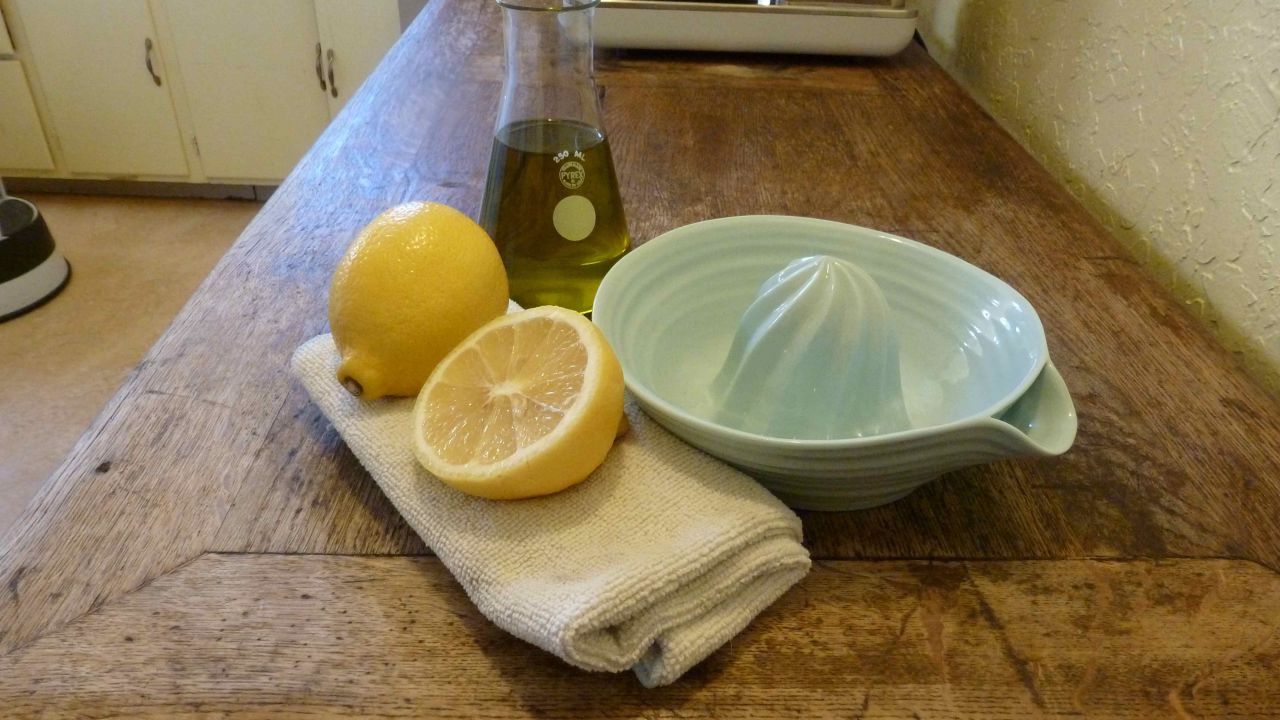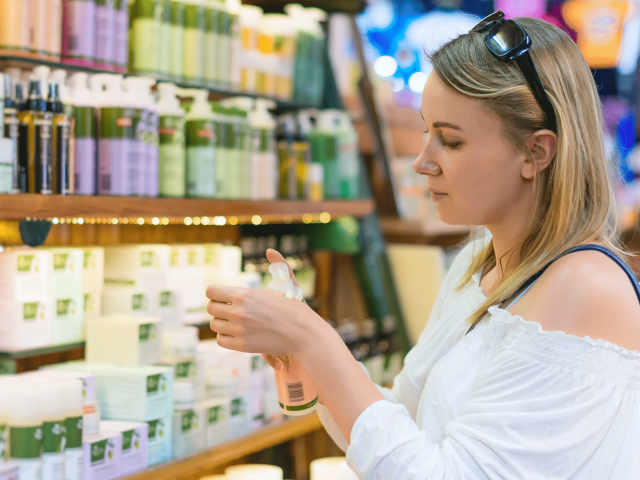
Olive oil and lemon juice,...sounds like a base for a fantastic vinaigrette, right? As a former professional chef, I always keep these simple ingredients stocked to create a variety of tasty sauces, dressings and marinades.
In fact, these are just a couple of the common pantry staples that can work double duty as cleaners. Why spend extra on conventional cleaners when you can make homemade versions from non-toxic kitchen items for a fraction of the cost?
After the holidays, I kick up my cleaning routine a notch, and tackle often-neglected spots, starting with the M.V.P. of the kitchen - the oven. Better to tame it now than let charred oven spills smolder - and set off the smoke alarm.
The highly caustic oven cleaning products I used during my chef years are the stuff of fume-filled nightmares. They contain chemicals like sodium hydroxide, potassium hydroxideand ethanolamine, which can burn your skin, eyes and lungs. Butoxydiglycol, a respiratory irritant, is also found in some oven cleaners. Many ingredient labels warn users to wear long gloves and avoid inhaling spray mist and vapors. As if the task of oven cleaning weren't unpleasant enough, who wants to don a HAZMAT suit to boot?
Thankfully, the do-it-yourself oven cleaner devised by green living expert, Sara Snow, (http://sarasnow.com/) is user-friendly. The star component is baking soda. I like to keep baking soda on hand for a plethora of cooking and homekeeping uses- to absorb odors in the refrigerator, to freshen the air in strategically placed bowls, to soak up carpet spills and to make a killer all-purpose batter for frying.
Ingredients:
1 pound plus 3 tablespoons baking soda
1 tablespoon salt
1 tablespoon water
Stir into a sandy paste. Adding an extra teaspoon of water to make the mixture the consistency of thick icing and more spreadable.
I triple the recipe to cover all three sides of my oven, using a rubber spatula to apply the creamy concoction. I sprinkle most of a small box of baking soda to blanket the oven floor and dampen it thoroughly with spritzes of water from a spray bottle. I shut the door and leave it alone to turn brick hard in a cold oven. (Reserve this task for a time when you won't be needing your oven for up to eight hours.)
Next, I attack my antique kitchen worktable. It's dry, cracked and needs some love. Some petroleum-derived ingredients found in conventional furniture polish are capable of damaging DNA and are linked to cancer. Snow's DIY furniture polish is a fragrant, luscious green - and good enough to eat.
Ingredients:
1/4 cup of fresh lemon juice (roughly half a lemon)
½ cup of olive oil
Whisk together. Test a hidden area prior to using. Shake well prior to each use because it naturally separates.
A few passes with a soft cloth and my table is glowing and looking its well-nourished best.
Like a child on Christmas morning, I awake the next day and peer in my oven to find a thick, hard crust. I chip away with a metal spatula for 10 minutes or less and scoop the shards, now glued to ashen food remains, into the trash. What is left is a thin powdery residue. I wipe it off with a wet cloth, and I'm done.
My kitchen looks well on its way to a respectable level of disorder!
For more DIY recipes, ingredients and tips to get every nook and cranny sparkling with ease and peace of mind, receive a copy of EWG's DIY Cleaning Guide today with a small donation.
And for help navigating the uncertain waters of store-bought cleaners, peruse hundreds of safety ratings in EWG's Guide to Healthy Cleaning.



